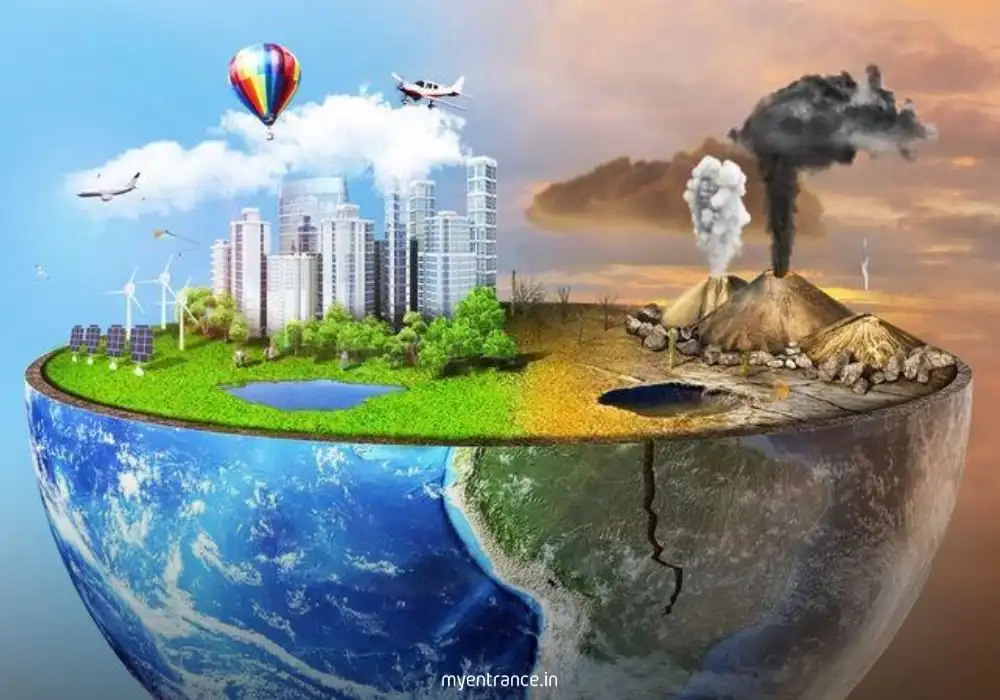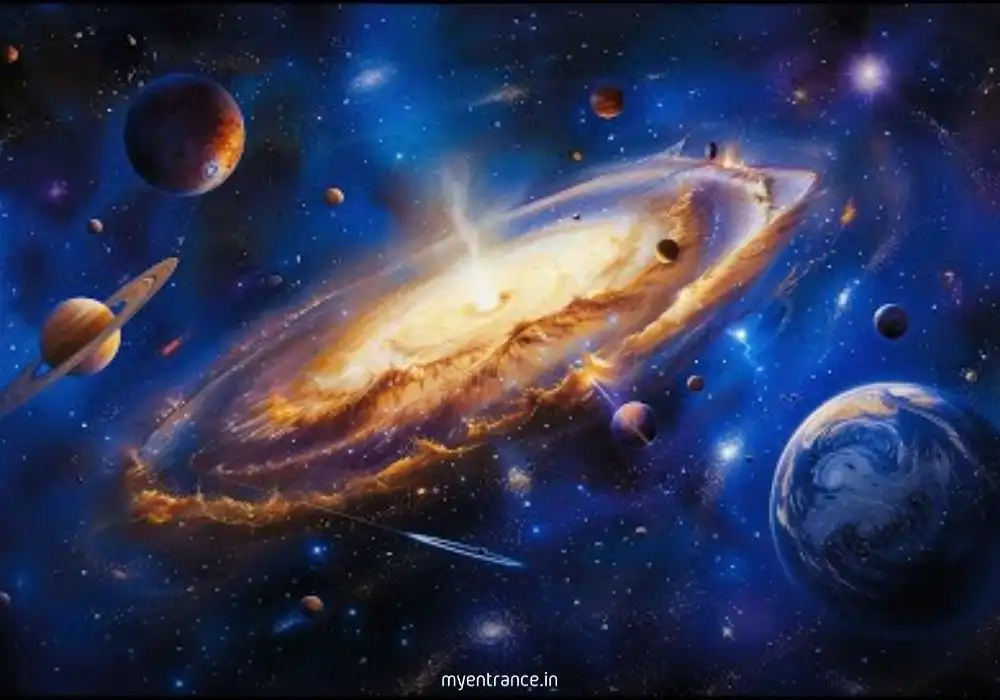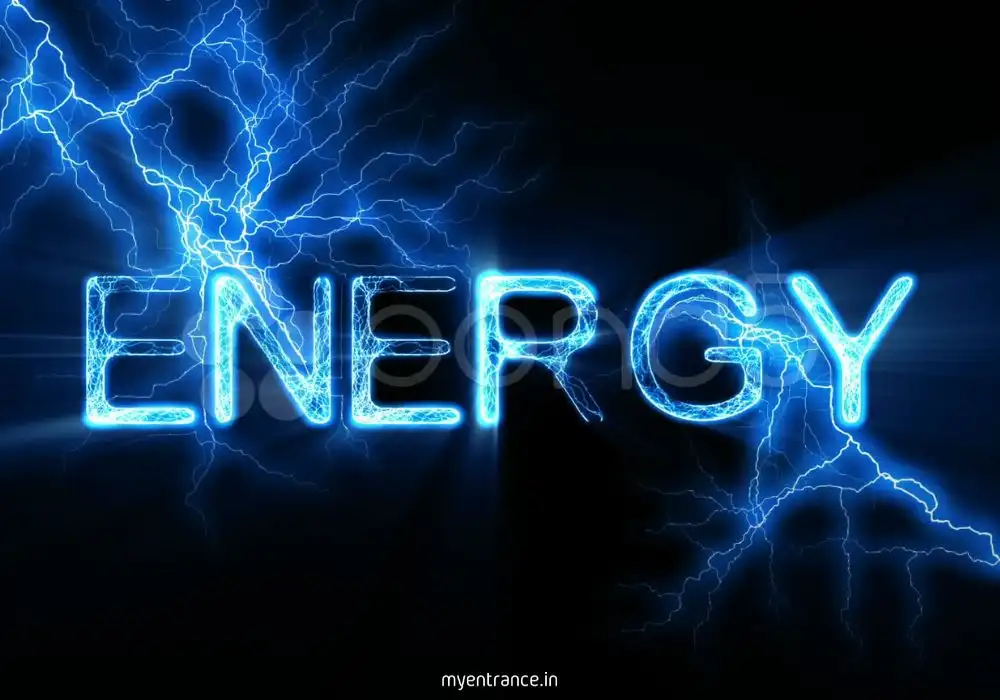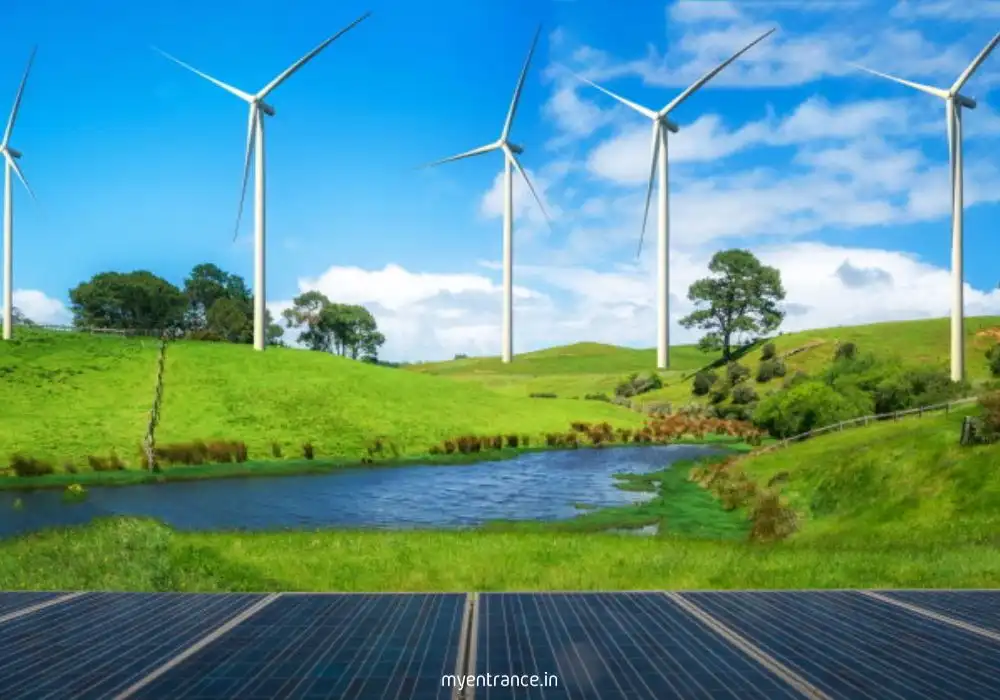Translate Language
Nuclear Energy: A Comprehensive Guide for Competitive Exams
Nuclear energy is a crucial topic in competitive exams like UPSC, SSC, PSC, and KAS due to its significance in global energy policies and environmental discussions. Understanding its working principles, benefits, risks, and future prospects helps aspirants tackle both objective and descriptive questions effectively.
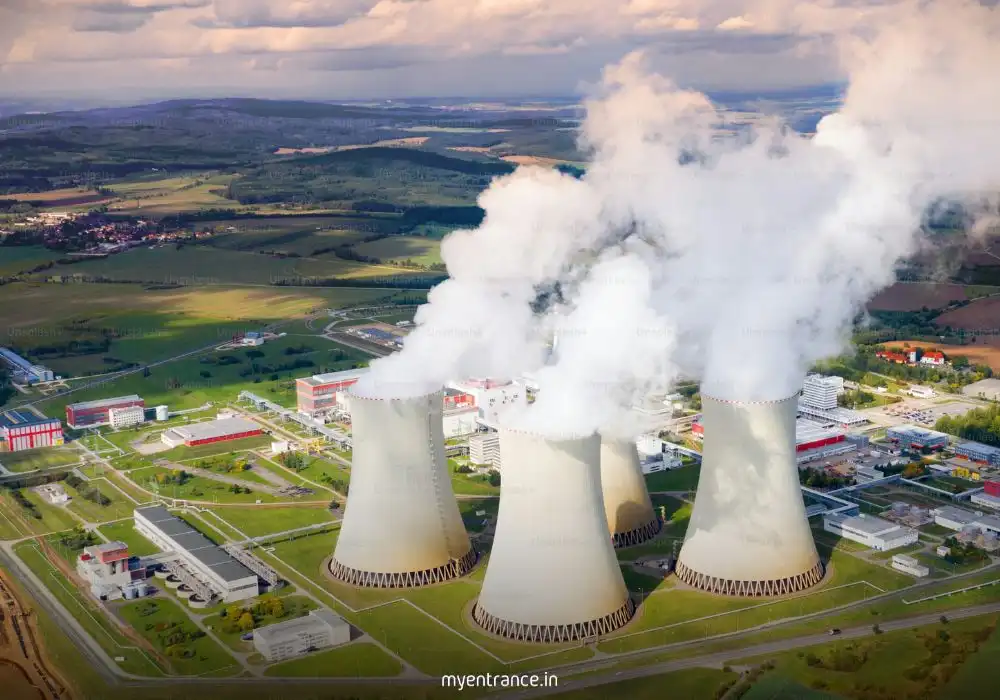
About Nuclear Energy
Nuclear energy is generated from the nucleus (core) of atoms through nuclear fission or nuclear fusion. Currently, nuclear fission is the primary method used in power plants, where heavy atoms like Uranium-235 or Plutonium-239 split into smaller nuclei, releasing massive energy.
Key Features of Nuclear Energy:
Low Carbon Emissions: Unlike fossil fuels, nuclear power does not emit CO₂ during electricity generation.
High Energy Output: A small amount of nuclear fuel produces significantly more energy than coal or oil.
Baseload Power: Provides continuous electricity, unlike intermittent renewable sources like solar or wind.
How Nuclear Power Plants Work
Nuclear power plants generate electricity similarly to conventional thermal plants but use nuclear reactions instead of burning fossil fuels.
Process of Electricity Generation:
Nuclear Fission: Uranium atoms split in the reactor core, releasing heat.
Heat Conversion: The heat turns water into steam.
Turbine Rotation: Steam spins turbines connected to generators.
Electricity Production: Generators convert mechanical energy into electrical power.
Common Reactor Types:
Pressurized Water Reactor (PWR): Uses high-pressure water as a coolant.
Boiling Water Reactor (BWR): Allows water to boil directly in the reactor core.
As of 2025, over 440 nuclear reactors operate worldwide, contributing 10% of global electricity (IAEA).
Nuclear Fuel and Resources
The primary fuel for nuclear reactors is uranium, which undergoes enrichment before use.
Key Facts About Nuclear Fuel:
Uranium-235 is the most commonly used isotope (only 0.7% of natural uranium).
Plutonium can be recycled from spent fuel for reuse.
Thorium-based reactors are being researched for safer, sustainable alternatives.
According to the World Nuclear Association, current uranium reserves can meet global demand for several decades.
Advantages of Nuclear Energy
Zero Operational Emissions: Does not produce greenhouse gases.
High Energy Density: Far more efficient than fossil fuels.
Reliable Power Supply: Provides uninterrupted baseload electricity.
Long Plant Lifespan: Operates for 40-60 years with upgrades.
Challenges and Risks
Despite its benefits, nuclear energy has significant concerns:
Major Challenges:
Radioactive Waste: Requires secure storage for thousands of years.
Nuclear Accidents: Chernobyl (1986) and Fukushima (2011) highlight safety risks.
High Initial Costs: Building reactors is expensive and time-consuming.
Public Opposition: Fear of radiation leaks and disasters persists.
Nuclear Energy and Climate Change
Nuclear power is increasingly seen as a clean energy solution to combat climate change.
Why It Matters for Climate Goals?
The IPCC and IEA recommend nuclear energy to reduce carbon emissions.
Complements renewables (solar, wind) by providing stable power.
Future of Nuclear Energy
Emerging technologies aim to make nuclear power safer and more efficient:
Next-Gen Nuclear Technologies:
✔ Small Modular Reactors (SMRs): Compact, scalable, and faster to build.
✔ Generation IV Reactors: Enhanced safety and reduced waste.
✔ Nuclear Fusion: Experimental but promises limitless clean energy (e.g., ITER Project in France).
Conclusion
Nuclear energy remains a critical yet controversial power source. While it offers clean, reliable electricity, challenges like waste disposal and safety concerns must be addressed. Future advancements in SMRs and fusion technology could revolutionize energy production.
Questions & Answers for Competitive Exams
Q1: What is the primary process used in nuclear power plants today?
A: Nuclear fission.
Q2: Which isotope is commonly used in nuclear reactors?
A: Uranium-235.
Q3: Name two major nuclear accidents in history.
A: Chernobyl (1986) and Fukushima (2011).
Q4: What is a key advantage of nuclear energy over fossil fuels?
A: It produces no carbon emissions during operation.
Q5: What is the goal of the ITER project?
A: To demonstrate the feasibility of nuclear fusion as an energy source.
Get 3 Months Free Access for SSC, PSC, NIFT & NID
Boost your exam prep!
Use offer code WELCOME28 to get 3 months free subscription. Start preparing today!








